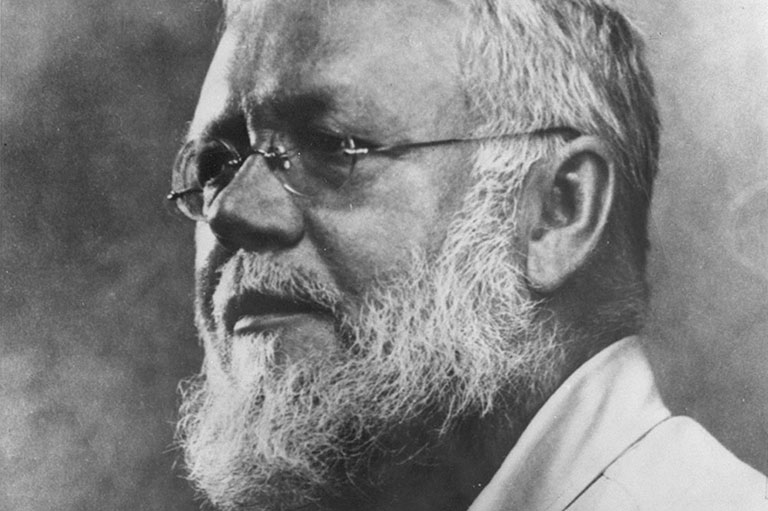Sourdough Thermometer

Many tales have become part of the folklore of the Klondike gold rush, and one such legend is the story of a “sourdough” thermometer.
Yukon cabins often had a bottle of quicksilver hanging outside the door, but while this common device was a practical one, it is the more elaborate thermometer which is of particular interest.
According to an old sourdough’s account an efficient cold-weather thermometer was improvised when it was learned that it would take up to two years to bring steel thermometers in for sale at the trading post located at the junction of the Fortymile and Yukon Rivers.
In the early 1890s, the trader, Leroy McQuesten, was persuaded to empty a number of pill bottles; these were used as containers for the thermometer ingredients.
Quicksilver (mercury) would freeze at -40°F (-40°C); coal oil, at -50°F (-45°C); and Jamaica ginger (a ginger extract used for flavouring) at -60°F (-51°C). Perry Davis’ Painkiller turned white at -60°F (-51°C), crystallized at -70°F (-56°C) and froze solid at -75°F (-59°C). St. Jacob’s Oil (a liniment, also known as St. Jakob’s Oel) would not freeze even in the coldest weather.
These items were all available to Yukon prospectors in those early days. A teaspoon of each was placed in separate glass containers and arranged appropriately on a rack.

St. Jacob’s Oil was a 19th century liniment which consisted mainly of water, ether, alcohol, turpentine, and a small proportion of aconite with red colouring matter. The Perry Davis’ Painkiller appears to have been used extensively throughout the Northwest. Glass bottle fragments found on sites of fur-trade posts dating after 1840 usually include pieces of the Painkiller bottle.
The Lower Fort Garry sales shop inventory of 1871 lists:
American Goods, Perry Davis’ Painkiller 3 1/4 doz. at 8/6 per dozen for a total of £ 1.7 .8 The Painkiller, first introduced in 1839, is still available in Canadian drug stores. The 1839 batch contained the following ingredients:
gum myrrh — 2 1/4 pounds
capsicum — 10 oz.
gum opium — 8 oz.
gum benzoin — 6 oz.
gum suiaic — 3 oz.
alcohol — 5 gallons
The sourdough thermometer was recently put to the test when D. Lawlor of the National Research Council offered to calibrate the liquids used as thermometer substances. St. Jacob’s Oil is no longer available but Mr Lawlor pointed out that ether, one of the ingredients, has a water freezing point of -175°F (-115°C) — which would account for the liniment not freezing in the coldest weather.
The other “thermometer” liquids react in essentially the manner described by the old sourdough. In particular:
“Perry Davis’ Painkiller was observed in a stirred alcohol bath between a room temperature of 70°F (21°C) and -75°F (-59°C) with the following results : As the temperature approaches freezing point, or 32°F (0°C) the liquid commences to become cloudy and continues to change colour to approximately -60°F (-51°C) where it becomes almost white, and remains in this state until -65°F (-53°C). Between -65°F and -70°F (-56°C) frozen crystals form throughout the liquid and at approximately -75°F it becomes a solid.”
Now that the accuracy of the thermometer has been scientifically confirmed, what was simply an interesting sourdough tale has been added to the growing accumulation of factual information on pioneer life in the Yukon.
Themes associated with this article
Advertisement









